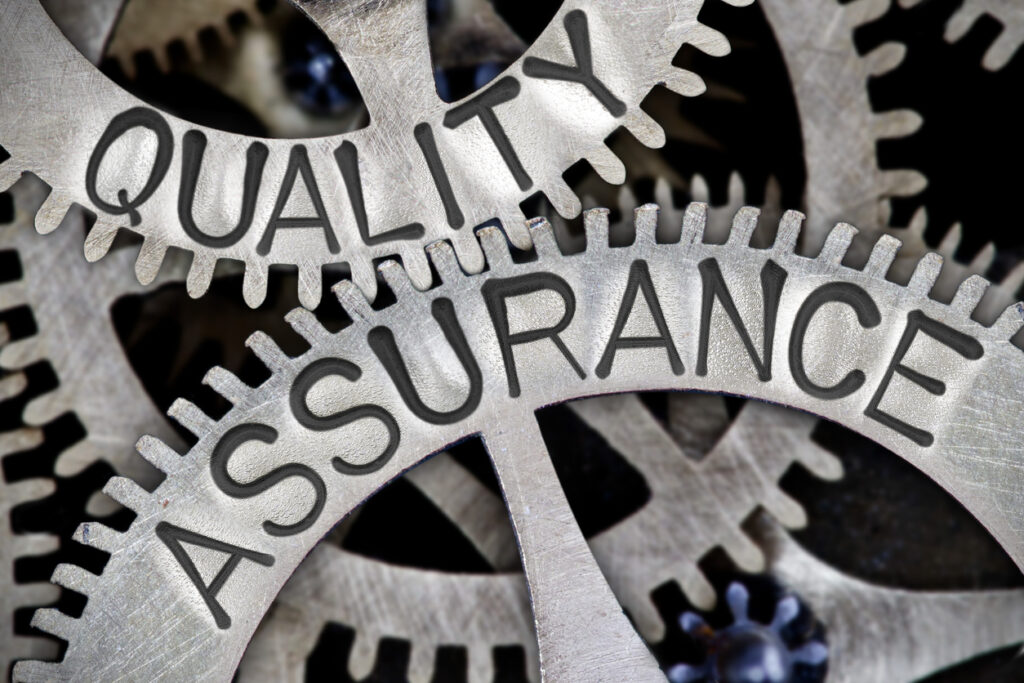Introduction
The quality of your website influences potential customers. When discussing web development, we definitely mention the importance of quality assurance.
However, achieving website success and customer satisfaction requires quality assurance. Throughout the entire web development process, it is essential to conduct testing and QA to ensure that the website functions properly and meets the customer’s expectations.
Consistent testing should be done to ensure that the website is up-to-date and secure. Here, Venice Web Design is going to examine quality assurance, how it works, and what the key stages and methods are.
What is Quality Assurance on the Website?
Quality Assurance (QA) on a website entails verifying that the site functions properly, conforms to user preferences, and operates without errors or issues.
However the procedure begins with checking and testing various aspects of the website. Such as functionality, usability, performance, security, and compatibility across a multitude of gadgets and browsers.
In order to enhance the user experience and maintain the website’s efficiency and reliability, QA identifies and fixes any defects, bugs, or inconsistencies.
Difference Between QA and QC
T 2 separate aspects of quality management:
Quality Assurance (QA)
- Concentrates on reducing issues and defects in the workflow that could impact the quality of the end product or service.
- Throughout the entire process, and aims to guarantee that appropriate procedures, standards, and techniques are adhered to as part of the product development or service delivery.
- QA is forward-looking, placing emphasis on planning, implementing, and continually updating processes to enhance quality.
- It entails duties like process audits, standards establishment, training, and creating guidelines to maintain consistency and quality.
Quality Control (QC):
- Focuses on spotting flaws and problems in the final product or service.
- Describes activities and techniques used to inspect, test, and verify the quality of the product or service at specific checkpoints.
- QC is reactive, as it occurs after the product or service has been developed or produced.
- It includes activities such as inspections, testing, sampling, and analysis to detect and rectify defects or deviations from the established standards.
A key difference between QA and QC is that QA aims to prevent issues before they occur through processes and standards. Whereas QC aims to detect and correct issues after they have occurred, developed or produced.
Both QA and QC are essential components of quality management, working together to ensure the overall quality of the final output.
How Does QA Work?
Take a moment to learn more about the work of these quality assurance engineers. Most development companies today use the Agile methodology to influence how it’s work.
Let’s find out more about it. QA engineers work to ensure product quality by testing a product’s functionality, usability, performance, and scalability.
They use a variety of tools and techniques to ensure that the product meets the user’s requirements and is free of bugs and defects.
The Agile methodology, which is widely used in software development, allows QA engineers to quickly identify and fix any issues that arise, allowing for a more efficient and effective process.
However QA engineers also stay current with industry trends and technologies to ensure that their organization’s products remain competitive.
Quality Assurance Process and Stages
To ensure products or services meet predefined standards, quality assurance (QA) involves a set of systematic steps:
- Requirements Analysis: Understanding project needs, goals, and specifications. This stage sets the foundation by comprehensively grasping what the end product should accomplish.
- Test Planning: Creating a roadmap for testing activities based on the gathered requirements. It involves deciding on testing approaches, methods, and tools to be used.
- Test Design: Developing detailed test cases, scenarios, and scripts. This step involves outlining specific steps to execute and validate the functionality of the product or service.
- Test Execution and Defect Reporting: Implementing the designed tests, running them, and documenting the outcomes. Any identified defects or issues are reported, allowing for their resolution.
- Continuous Improvement: Iteratively refining processes, methodologies, and strategies. This ongoing stage involves learning from previous cycles, incorporating feedback, and enhancing approaches for better quality outcomes.
Throughout these stages, QA aims to prevent issues, ensure compliance with standards, and enhance the overall quality of the final product or service.
Why Should You Hire a QA For Your Site?
Hiring a Quality Assurance (QA) professional for your site offers numerous benefits:
- Enhancement in User Experience: QA ensures your site functions smoothly, providing users with a seamless and error-free experience, leading to increased satisfaction and retention.
- Bug Detection and Prevention: QA identifies and addresses issues before they reach users, preventing potential bugs that could disrupt site functionality.
- Maintaining Site Credibility: A well-tested and error-free site reflects professionalism, reliability, and trustworthiness, crucial for building and maintaining credibility among users.
- Compliance and Consistency: QA ensures your site complies with industry standards and maintains consistency across various devices, browsers, and operating systems.
- Cost Savings: Detecting and fixing issues early in the development cycle is more cost-effective than addressing them after the site is live. QA helps minimize potential financial losses due to site malfunctions.
- Optimized Performance: QA helps in optimizing site performance, ensuring faster load times, efficient navigation, and overall better functionality.
- Risk Mitigation: By identifying potential risks and vulnerabilities, QA reduces the chances of security breaches or data loss, safeguarding both your site and user information.
An online presence that is robust and high-quality is ensured by hiring a quality assurance professional.
Final Remarks!
With a dedicated QA professional at your service, Venice Web Design can seamlessly help you ensure the quality of your online presence.
Moreover, this encompasses proficient bug detection and prevention, contributing to the maintenance of site credibility. Additionally, it ensures assurance of compliance and consistency, leading to cost savings, optimized performance, and effective risk mitigation.
Having a skilled QA professional onboard adds a layer of reliability and precision to your digital initiatives. Furthermore, it ensures that your website not only meets but exceeds industry standards, providing a seamless and trustworthy user experience.
FAQs
What is Quality Assurance (QA)?
QA involves systematic processes to ensure products or services meet predefined standards. It focuses on preventing issues before they occur, enhancing overall quality.
Why is QA important in software development?
QA ensures that software meets user expectations, functions reliably, and is free of errors. It reduces risks, enhances user satisfaction, and maintains the credibility of the software.
What are the main stages of the QA process?
The main stages include requirements analysis, test planning, test design, test execution, and continuous improvement. Each stage contributes to ensuring high-quality products or services.
How does QA benefit a website or application?
QA enhances the user experience by identifying and fixing issues before deployment. It improves site functionality, reliability, and performance, leading to satisfied users.
Is QA only relevant during development?
No, QA is a continuous process that extends beyond development. It involves ongoing monitoring, updates, and improvements to maintain quality throughout the product’s lifecycle.


